The single most frequently asked questions on this site of late has not been “Wait, you just put peanut butter inside a chocolate cookie, are you pregnant?” (Which is too bad because I want nothing more than an excuse to say this.) It’s not “Can I make this recipe gluten-free/dairy-free/Whole30-compliant?” (Me.) And it’s not even, “How do you do your daughter’s hair?” (We wake her up at 4 to set it in curlers, it’s a little crazy but obviously worth it). It is, in fact, some combination of “I need Instant Pot recipes.” and “How do I make this in an Instant Pot?” or “Should I get an Instant Pot?” Today I’ll do my best (and, of course, just skip ahead if you’ve already made peace with the presence or absence of one in your life):
* Is it worth the space? While I cannot answer for you whether you have the space for another large kitchen appliance, it’s worth noting that the IP could ostensibly replace a slow-cooker (or slow-cookers, in my crazy case), a stovetop pressure cooker, should you have one, and a rice cooker, although I’ll get rid of mine when you pry it out of my cold, dead hands. I can tell you with authority that I don’t have room for mine, but I like it anyway. I also don’t have room for my children and their belongings in this apartment, but I like them anyway (“anyway” = after 7am).
* But I am perfectly happy with my slow-cooker: I think of the IP/other electric multicookers and Crock-Pots/slow-cookers on the same continuum with different speeds. They excel at many of the same things: beans and stocks and long braises. Both are plugged in so you can put stuff in them and walk away (unlike a live gas flame on a stove). The slow-cooker requires you to think about what you’d like for dinner either the night before or that morning before you go off to work — it slows things down. Electric pressure cookers allow you to do it when you get home — it speeds things up. (The IP also makes yogurt, hard-boiled eggs, and rice, you can simmer a pot of liquid in it about as fast as you would on a stove, and you can actually brown things like meat, so it’s got a few other tricks up its sleeve, but rice and eggs at least cook faster on a stove.)
* But it’s faster, right? Sometimes but not always. The name is a lie; it’s not going to cook anything “instantly.” Pressure cookers shave a significant amount of cooking time off longer dishes, but almost all “I did short ribs in 35 minutes!” (see also: below!) conversations omit that it can take up to 25 minutes for the machine to get up to pressure, and if you’re “naturally releasing” the pressure, at least in my experience, the rest of your life, or at least the cooking time you saved by not making it on your stove/in your oven, to be done. Fortunately, it’s rarely necessary to let things fully naturally release.
Here is an opinion: I actually think speed isn’t the point. I think a lot of the magic that people speak of when they talk about the IP is less about how well it cooks everything (although it does just fine, especially if intact textures or crispy edges aren’t your goal) and more about the ease of use, that we can come home after a long day and throw some stuff in it and *walk away* — change your clothes, help your kid with their homework, pour a glass of wine, do any of the things you’d prefer to be doing at the moment rather than hovering about a stove — and when it dings 15 to 30 minutes later, it holds your dinner cooked and warm almost indefinitely. The internet is full of 15 to 30-minute meal ideas, you don’t need an IP to make one, but they’re not hands-off.
* What size should I get? Guys, I went big, I got the 8-quart. It just didn’t feel *that* much bigger to me than the 6-quart but do you know what would annoy me until the end of time? Having a clunker as large as the 6-quart in my home and finding it didn’t hold all the liquid I needed for stock, or, like, a whole bird, because sometimes you need to put a whole bird in a pot. I’d rather have room to spare. I’d rather be free to double what I want to double.
* Has it changed your life, Deb? I work from home, often in the kitchen and don’t mind a bit if a pot is glurping away on the stove or braising away in the oven for hours, so it doesn’t do as much for me as it does for others, but on the occasion that I’m working on a dish that will not partially or fully form a dinner meal (I mean, the nerve), being able to throw things in there (chicken breasts, an onion, garlic, spice) for 7 minutes to make an almost comically easy and hands-off taco filling is a neat trick to have up my sleeve.
* The manual is terrible and the buttons are confusing: Yes, they are. Ignore them. A good cookbook or recipe will tell you exactly what to push at which times on your cooking robot and you’ll be just fine. And speaking of good cookbooks…
I recently got a copy of Coco Morante’s The Essential Instant Pot Cookbook. There are a lot of IP cookbooks out there right now, and some of them are fantastic (some are comical), but this was the first one where I was overwhelmed with a desire to quit my day job, so to speak, and Julie-Julia it for a month. There are so many recipes in here that perfectly strike the midpoint between attainable but still inspired, and so blessedly little cookbook filler, I hardly knew where to began. I love steel-cut oats but they take forever on the stove; I made her apple pie riff on the oats (with a few tweaks) in the IP (although, lols) and one entire child out of two actually agreed to eat it, which, by the way, is considered a success story around here, plus the leftovers were great on other mornings. I made the potato-leek soup (with a few more tweaks), something that’s never held our interest before, and we enjoyed it for two full days of dinner. I have about 8 other dishes tabbed for the next time I don’t feel like making dinner but would do it if it was fairly hands-off. And finally, because short ribs are my favorite meat, but still one I don’t make very often because they’re fairly rich and feel fancy, I made her riff on galbi jjim, or Korean braised short ribs, and they were so good, I made them again three days later.
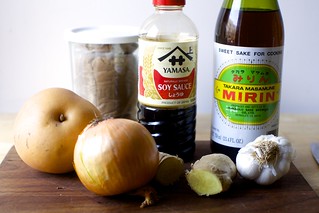
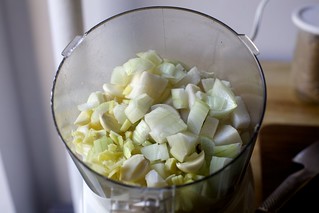
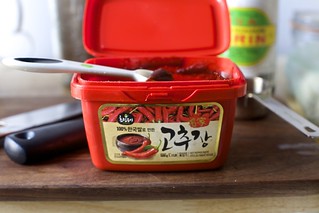
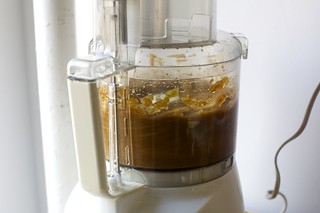
In those three days, I went on an Authenticity Hunt, this obsessive thing I do where I watch a lot of YouTube videos from, in this case, Korean cooking channels, to see where a recipe I have in mind diverges from, say, the way a Korean grandmother might make it. I don’t think every recipe needs to be the height of authenticity, but it bothers me when a recipe deviates and doesn’t tell us why, or possibly even know that it does.
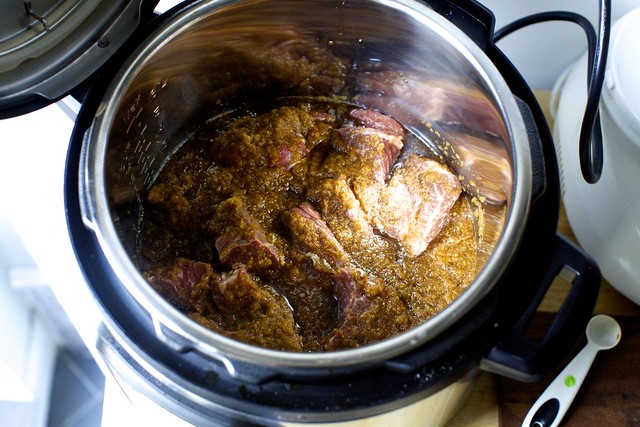
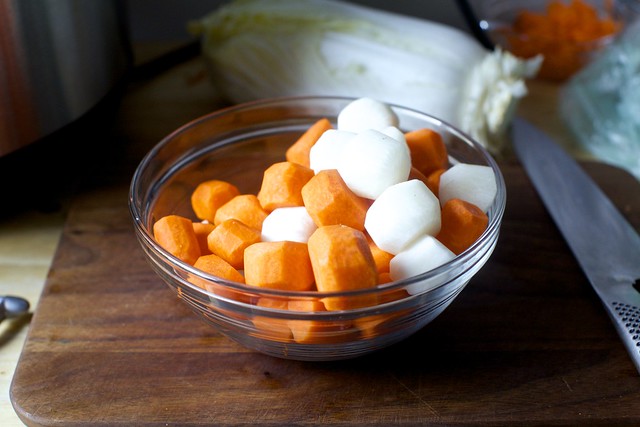
What I learned is that this dish is considered a special occasion meal. Beef is not as common in Korea — which is fairly narrow peninsula surrounded by water; not ideal cattle conditions — as a lot of the grills-in-tables Koreatown restaurants would make us think. This dish is usually done with bone-in short ribs (small cuts are usually made in it) and in almost every Korean recipe I saw, the meat is always soaked in cold water (and sometimes a few changes of water) for 30 minutes to 2 hours to drain excess blood. They’re then boiled for 5 minutes to remove fat. The theory is that you either skim it from the braise or you can get rid of it sooner; I’d like to try this next time. I thought it was a funny thing that the vegetables were blended raw to make the braising liquid but then someone reached out to me and told me this was fairly common, that it’s done to thicken the sauce too, and that the pear is usually used a natural sweetener, so less sugar is needed. Overall, the Korean cooking site recipes I saw didn’t do the kind of braise we usually see in, say, French cookbooks: browning the meat and then a very long cooking time. Most just simmered it on the stove for 60 to 90 minutes. But otherwise? This recipe is pretty close, which is great because we loved it and think you will too.
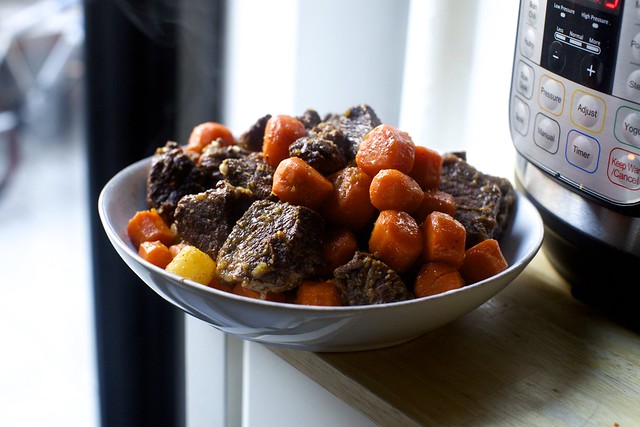
However you make this — I’m including oven-braising instructions, because that’s how I most commonly make short ribs — do know that this recipe is a delight. On the second day, it’s even better, and as well as the third. We ate it with plain rice, kimchi, sometimes a cucumber salad, and sometimes a napa cabbage salad too, and we were sad when the leftovers were done. Fortunately we’re only 35 minutes 55 minutes er, 75 minutes from this happening.
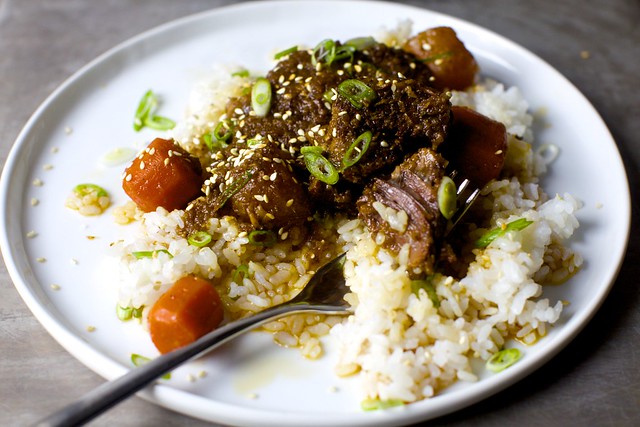
[More Instant Pot recipes on Smitten Kitchen: Right here!]
Previously
One year ago: Small Batch Tiramisu
Two years ago: Hot and Sour Soup and Belgian Brownie Cakelets
Three years ago: Oven-Braised Beef Tomatoes and Garlic and Pecan Sticky Buns
Four years ago: Chocolate Hazelnut Linzer Hearts and Chocolate Peanut Butter Cheesecake
Five years ago: Salted Caramel Brownies
Six years ago: Lasagna Bolognese
Seven years ago: Blood Orange Olive Oil Cake and White and Dark-Hearted Brownies
Eight years ago: Chana Masala, Walnut Jam Cake, Ginger Fried Rice and How To Make an Overly Obsessive Spice Rack
Nine years ago: Chocolate Whiskey and Beer Cupcakes, Crispy Black Bean Tacos with Feta and Slaw and Whole Lemon Tart
Ten years ago: Dulce de Leche Cheesecake Squares, Seven Yolk Pasta Dough and Best Chocolate Pudding
Eleven years ago: Sour Cream Bran Muffins
And for the other side of the world:
Six Months Ago: Blackberry-Blueberry Crumb Pie
1.5 Years Ago: Chile-Lime Melon Salad and Chocolate Peanut Butter Icebox Cake
2.5 Years Ago: Raspberry Crushed Ice
3.5 Years Ago: Apricot Pistachio Squares
4.5 Years Ago: Strawberry Lime and Black Pepper Popsicles
Korean Braised Short Ribs | Galbi Jjim
- 1 yellow onion, peeled and cut into chunks
- 1 Asian or Bosc pear, peeled and cut into chunks
- 8 cloves garlic, peeled
- 1-inch knob fresh ginger, peeled and chopped
- 1/4 cup mirin (sweet rice wine) or apple juice
- 6 tablespoons soy sauce
- 1 teaspoon or more hot sauce, such as gochujang
- Salt, to taste
- 3 to 3 1/2 pounds boneless beef short ribs, rinsed and cut into 3-inch segments
- 4 large carrots, peeled and cut into 1-inch pieces
- 1 medium daikon, peeled and cut into 1-inch pieces
- 1 tablespoon toasted sesame seeds (to garnish)
- 2 scallions, thinly sliced on the diagonal (to garnish)
In an Instant Pot/electric multicooker: Arrange short rib pieces in a single layer. Pour blended sauce over, and stir to coat. Secure the lid and set the pressure release valve to Sealing. Select the Meat/Stew setting for 35 minutes at high pressure. When the timer goes off, you can perform a quick release by moving the pressure release valve to Venting, but do so with tongs or a spoon because the pressured steam release will absolutely burn your hand. Open the pot and add the carrots and daikon. Secure the lid on the pot again, and set the pressure release valve once again to Sealing. Select Cancel to reset the cooking program, then select the Manual program and set the cooking time for 3 minutes at high pressure. Perform another quick release when the time is up (moving the valve to Venting). Open the pot and use a slotted spoon to remove the meat and vegetables from the cooking liquid, then use a spoon or fat separator, if you have one, to skim as much of the fat as possible from the surface of the sauce. Taste the sauce for seasoning and adjust as needed, then spoon the sauce over the meat and vegetables. Garnish with sesame seeds and scallions.
In the oven: Heat oven to 325 degrees F. Combine short rib pieces and blended sauce in a heavy casserole dish or Dutch oven. Cover tightly with foil and a tight-fitting lid, if you have one. Bake in oven for 3 hours. To check for doneness, carefully remove the lid and foil (trapped steam can burn you) and pierce the meat with the tines of a fork or point of a knife; it should yield easily. Taste a bit you pull off if you’re not sure. Use a slotted spoon to remove the meat and vegetables from the cooking liquid, then use a spoon or fat separator, if you have one, to skim as much of the fat as possible from the surface of the sauce. Taste the sauce for seasoning and adjust as needed, then spoon the sauce over the meat and vegetables. Garnish with sesame seeds and scallions.
To serve: We ate this with white rice, a quick cabbage salad (thinly sliced napa cabbage, grated carrots, and thinly sliced scallions dressed with rice vinegar, toasted sesame oil, red pepper flakes and salt to taste), and a quick cucumber salad (thinly sliced small cucumbers lightly marinated in rice vinegar, salt, a pinch of sugar, and pepper) and gochujang (Korean hot chili paste) on the side.
Do ahead: Short ribs are so good the second and third days, if you have any chance to plan ahead, you should. They keep in the fridge, buried in their braising liquid, for 4 to 5 days. They’re also much easier to de-fat; it will solidify once chilled and be easy to remove before reheating.
Source: http://feedproxy.google.com/~r/smittenkitchen/~3/DlEIel3Eebg/